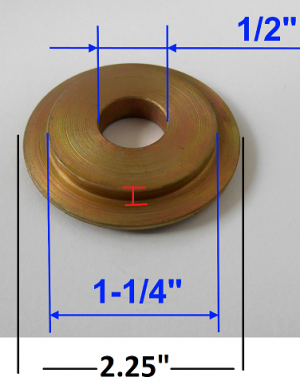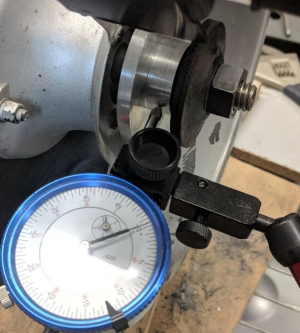- Joined
- Apr 23, 2018
- Messages
- 6,550
With a white cup wheel, I can do 1/4" 2-flute end mills easily. I could probably do 1/8" 2-flutes but haven't tried
With a CBN cup wheel, the smallest I've done is sharpen face only on 1/4" 4-flute mills. If I wanted to do more than the face, I would need a nice flaring wheel in order to reach the relief cuts and back cuts. That is all moot if I can't grind fine gashes. I need another wheel for that. Flaring wheel helps with those clearance and back cuts and will gash 3/8" 4-flutes (white wheel).
I don't know what the smallest flutes I can sharpen are. Probably pretty small, like 3/16". It's easy but dependent on having a fluting fixture. It also changes the diameter of your mills and drills, so I only do it when the flutes are dull. Keep spare band-aids on hand for this.
With a CBN cup wheel, the smallest I've done is sharpen face only on 1/4" 4-flute mills. If I wanted to do more than the face, I would need a nice flaring wheel in order to reach the relief cuts and back cuts. That is all moot if I can't grind fine gashes. I need another wheel for that. Flaring wheel helps with those clearance and back cuts and will gash 3/8" 4-flutes (white wheel).
I don't know what the smallest flutes I can sharpen are. Probably pretty small, like 3/16". It's easy but dependent on having a fluting fixture. It also changes the diameter of your mills and drills, so I only do it when the flutes are dull. Keep spare band-aids on hand for this.










